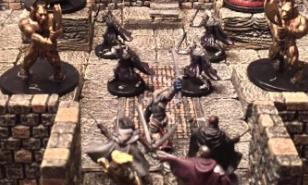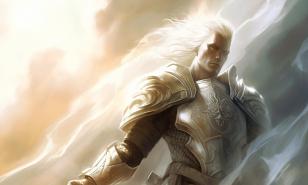D&D Best Sorcerer Spells for Every Level

D&D Best Sorcerer Spells for Every Level
As a sorcerer, you often fill a very different roll in your party from the wizard or cleric, and both your spells and spell lists need to match. I present to you 3 spells at each level that as a Sorcerer in D&D 5e, you should absolutely pick up.
1.Cantrips AKA Level 0
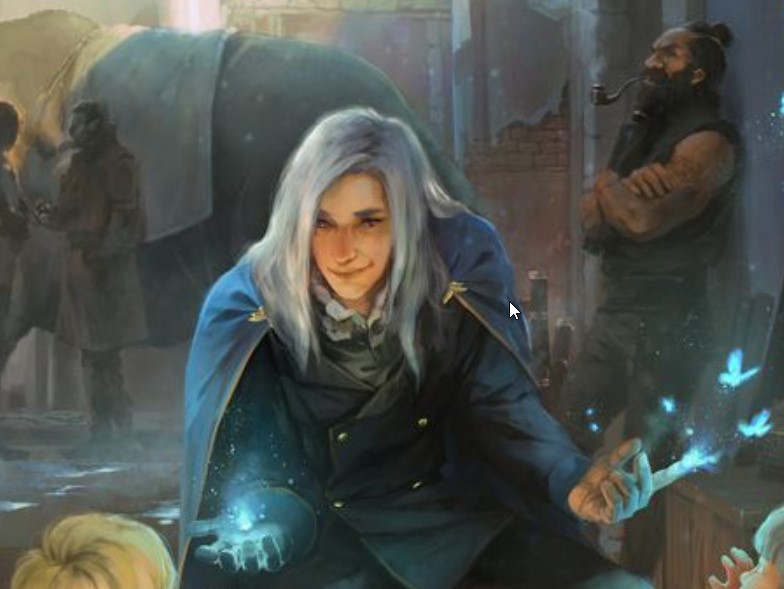
(Image Credit: Lap Pun Cheung)
The Best Cantrip AKA Level 0 Sorcerer Spell- Prestidigitation
The best Cantrip for a sorcerer is easily Prestidigitation, and is a spell honestly that no spell caster should be without, but especially not a sorcerer.
Source: Player's Handbook
Transmutation cantrip
Casting Time: 1 action
Range: 10 feet
Components: V, S
Duration: Up to 1 hour
This spell is a minor magical trick that novice spellcasters use for practice. You create one of the following magical effects within range:
You create an instantaneous, harmless sensory effect, such as a shower of sparks, a puff of wind, faint musical notes, or an odd odor.
You instantaneously light or snuff out a candle, a torch, or a small campfire.
You instantaneously clean or soil an object no larger than 1 cubic foot.
You chill, warm, or flavor up to 1 cubic foot of nonliving material for 1 hour.
You make a color, a small mark, or a symbol appear on an object or a surface for 1 hour.
You create a nonmagical trinket or an illusory image that can fit in your hand and that lasts until the end of your next turn.
If you cast this spell multiple times, you can have up to three of its non-instantaneous effects active at a time, and you can dismiss such an effect as an action.
Spell Lists. Artificer, Bard, Sorcerer, Warlock, Wizard
Prestidigitation is an incredible skill just do to its sheer flexibility. As a Sorcerer, your spells known are locked in to only about 15 spells known through the entire game. The more things that your single spell known can cover, the better it will be.
Prestidigitation also is a incredible roleplaying spell, allowing you to do all the fun “Magic tricks” that are common to magic wielders in stories. Want to chill your beer at the counter to make a point? One prestidigitation cast solves that problem.
One actual mechanical benefit of the spell is it’s ability light or snuff candles, torches, or small campfires, and to . That’s a wide array of light sources that your sorcerer can now alter and adjust at a 10 foot range to whatever condition would better suit him. Don’t have time to light that torch and fighting in the dark? One prestidigitation and the torch on the fighter’s back is lit instantly.
The next spell you should absolutely pick up as a cantrip is Mind Sliver-
2. Second Best Cantrip AKA Level 0 Sorcerer Spell- Mind Sliver
Source: Tasha's Cauldron of Everything
Enchantment cantrip
Casting Time: 1 action
Range: 60 feet
Components: V
Duration: 1 round
You drive a disorienting spike of psychic energy into the mind of one creature you can see within range. The target must succeed on an Intelligence saving throw or take 1d6 psychic damage and subtract 1d4 from the next saving throw it makes before the end of your next turn.
At Higher Levels. This spell’s damage increases by 1d6 when you reach certain levels: 5th level (2d6), 11th level (3d6), and 17th level (4d6).
Spell Lists. Sorcerer, Warlock, Wizard
Mind sliver does fair enough damage at 1d6, but importantly in fifth edition not all undead and mindless are automatically immune to psychic damage, which means the majority of critters you face should not have resistance to it, unlike the more popular and prepared for fire damage.
Mind sliver does something important, which is help snowball your abilities. Reducing the chance of it’s next saving throw succeeding provides the opportunity to use even more powerful spells to greater effect.
On that same path, this spell also gives you a way to add to your team’s combat by allowing other spell casters and team members to use their abilities which you can help ensure succeed by making the enemy fail their save.
Finally, with offensive capabilities covered and practicality satisfied, you’ll need a defensive option. My recommendation is Blade Ward.
The Third Best Cantrip AKA Level 0 Sorcerer Spell- Blade Ward
Source: Player's Handbook
Abjuration cantrip
Casting Time: 1 action
Range: Self
Components: V, S
Duration: 1 round
You extend your hand and trace a sigil of warding in the air. Until the end of your next turn, you have resistance against bludgeoning, piercing, and slashing damage dealt by weapon attacks.
Spell Lists. Bard, Sorcerer, Warlock, Wizard
As a Sorcerer, you are not particularly tough or robust. Bladeward does the most important thing you need when you find yourself in a situation where your allies can’t protect you. Buy you time. That extra round may be all you need for your allies to rescue you.
Importantly, the spell does not distinguish between magical attacks and regular weapon attacks. This means that this spell continues to scale and be useful all the way until the final levels of the game.
Additionally, because it gives you resistance, which in fifth edition automatically halves the damage, your damage reduction is increased proportionately to the amount of damage you’ve taken. Very few spells become automatically more effective the more desperately you need them.
Once we are out of the realm of cantrips, we begin selecting our first level spells, which are our first real heavy duty hitters.
2. Level 1 Sorcerer Spells
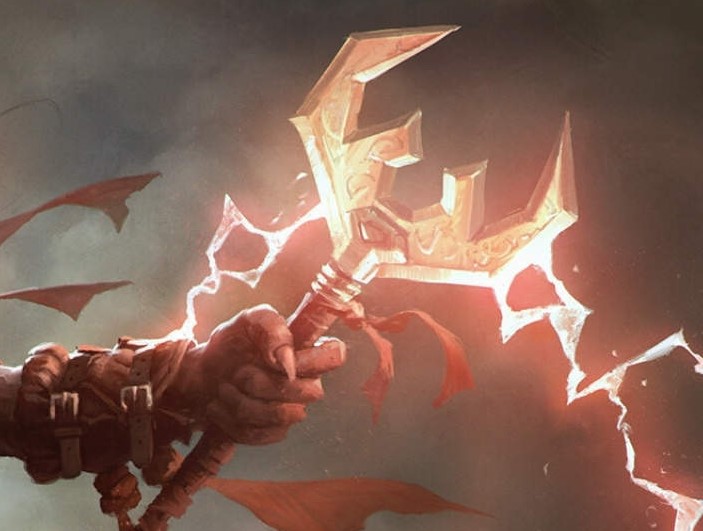
(Image Credit: Bryan Sola)
The Best Level 1 Sorcerer Spell- Witch Bolt
Source: Player's Handbook
1st-level evocation
Casting Time: 1 action
Range: 30 feet
Components: V, S, M (a twig from a tree that has been struck by lightning)
Duration: Concentration, up to 1 minute
A beam of crackling, blue energy lances out toward a creature within range, forming a sustained arc of lightning between you and the target. Make a ranged spell attack against that creature. On a hit, the target takes 1d12 lightning damage, and on each of your turns for the duration, you can use your action to deal 1d12 lightning damage to the target automatically. The spell ends if you use your action to do anything else. The spell also ends if the target is ever outside the spell’s range or if it has total cover from you.
At Higher Levels. When you cast this spell using a spell slot of 2nd level or higher, the initial damage increases by 1d12 for each slot level above 1st.
Spell Lists. Sorcerer, Warlock, Wizard
Witch Bolt is one of my favorite spells because it has one of the highest overtime damage outputs of any spell. Over 10 turns, you will do 10d12 points of damage. No other level one spell has that kind of damage potential.
Witch bolt also only requires 1 attack roll. Once it hits, you just sacrifice your action to continue to do damage and your opponent gets no save to stop it. Hit once with witchbolt, then stand back and let it burn your opponent away.
Like many spells, witchbolt scales, but due to how witchbolt works, each spell level is a insane multipliers, eventually reaching a level 9 witch bolt which, over the course of 10 turns, will do 90d12 damage, a number that’s hard to even think about, and very few things will be able to survive even in the late games.
The Second Best Level 1 Sorcerer Spell- Silvery Barbs
Source: Strixhaven: A Curriculum of Chaos
1st-level Enchantment
Casting Time: 1 reaction, which you take when a creature you can see within 60 feet of yourself succeeds on an attack roll, an ability check, or a saving throw
Range: 60 feet
Components: V
Duration: Instantaneous
You magically distract the triggering creature and turn its momentary uncertainty into encouragement for another creature. The triggering creature must reroll the d20 and use the lower roll.
You can then choose a different creature you can see within range (you can choose yourself). The chosen creature has advantage on the next attack roll, ability check, or saving throw it makes within 1 minute. A creature can be empowered by only one use of this spell at a time.
Spell Lists. Bard, Sorcerer, Wizard
Much like Mind sliver before, Silvery barbs is a spell that uses a simple effect to do a oversized impact. Forcing a reroll of a potential critical hit is already one of the most powerful defensive abilities you can have, and the boost to yourself or an ally is icing on the cake.
Silvery barbs also has the ability to allow your ally/self to choose when to activate within the next minute, or 10 rounds. This allows your ally to save an attack for a particularly vital moment, or a particularly bad potential negative effect up that needs stopped.
I always advocate spells that scale appropriately, and because this spell is based off of the die roll, not anyones stats or abilities, it’s just as effective at 20th level as it is at 1st, as there is no save for a higher level creature to beat!
The Third Best Level 1 Sorcerer Spell- Expeditious Retreat
Source: Player's Handbook
1st-level transmutation
Casting Time: 1 bonus action
Range: Self
Components: V, S
Duration: Concentration, up to 10 minutes
This spell allows you to move at an incredible pace. When you cast this spell, and then as a bonus action on each of your turns until the spell ends, you can take the Dash action.
Spell Lists. Artificer, Sorcerer, Warlock, Wizard
Expeditious Retreat is a spell with both great in and out of battle applications. In battle, it does one of the most important things you can do as a sorcerer, which is to ensure that you stay out of harm’s way by putting distance between you and possibly speedy, deadly monsters. The best defense for a sorcerer is to never get hit in the first place.
The amount of distance covered by this spell is pretty incredible. The dash action allows you to take your movement speed as additional movement. Allowing you to cast it as a bonus action means that, in a flat out sprint, by taking first move, then dash, then bonus dash action, you’ll be moving over 90 feet in 6 seconds, or 10MPH, as fast as a car!
The spell lasts for a full 10 minutes. Moving at 10MPH for 10 minutes will allow you to cover a LOT of distance, but again, scaling is important. Any enhancement to your speed will also be improved here, with a simple 5 foot increase to your base speed coming out to 15 feet in a full run. Eventually, a casting or two of this spell will enable to you cover insane distances in incredibly short amounts of time.
3. Level 2 Spells
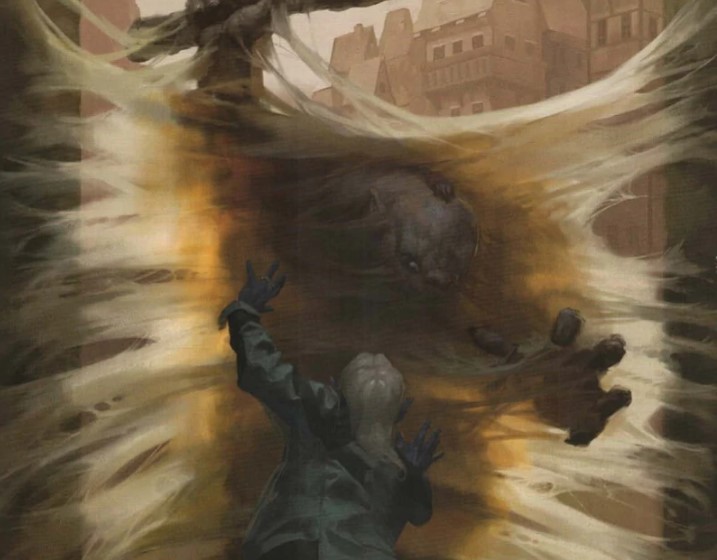
(Image Credit: Juan Russo)
Leaving level 1 spells behind, we move up to our next section, our 2nd level spells. This is also where our number of options open up, so the perfect spell will become more reliant on your build. However, these are spells I think you should prioritize.
The Best Level 2 Sorcerer Spell- Web
Source: Player's Handbook
2nd-level conjuration
Casting Time: 1 action
Range: 60 feet
Components: V, S, M (a bit of spiderweb)
Duration: Concentration, up to 1 hour
You conjure a mass of thick, sticky webbing at a point of your choice within range. The webs fill a 20-foot cube from that point for the duration. The webs are difficult terrain and lightly obscure their area.
If the webs aren’t anchored between two solid masses (such as walls or trees) or layered across a floor, wall, or ceiling, the conjured web collapses on itself, and the spell ends at the start of your next turn. Webs layered over a flat surface have a depth of 5 feet.
Each creature that starts its turn in the webs or that enters them during its turn must make a Dexterity saving throw. On a failed save, the creature is restrained as long as it remains in the webs or until it breaks free.
A creature restrained by the webs can use its action to make a Strength check against your spell save DC. If it succeeds, it is no longer restrained.
The webs are flammable. Any 5-foot cube of webs exposed to fire burns away in 1 round, dealing 2d4 fire damage to any creature that starts its turn in the fire.
Spell Lists. Artificer, Sorcerer, Wizard
Web doesn’t sound very impressive at first glance, but the key is the word “Restrained.” Restrained is 3 powerful negative effects at once, Disadvantage on attacks, Disadvantage on Dexterity Saving throws, and being locked in place. Some DM’s (Though not all) may even rule that an enemy spell caster will be unable to cast somatic components if they don’t have their hands free. A enemy restrained by web is a sitting duck unable to defend itself in more ways than one.
Web happens to also have a side benefit as an emergency damage spell. While rarely are you going to want to purposefully burn up your own webs, the fact that if an opponent attempts to burn their way out, or if your just hoping to hold them still for a well placed fireball, the extra 2d4 damage is a very nice icing on top.
While another concentration spell, web lasts for an entire HOUR if focused on. That means that if a creature does not have the strength score to beat your spell casting DC, the battle is basically over. Considering some of the most dangerous baddies in the game are spellcasters with paltry strength scores, this spell becomes rapidly more valuable based on your opponents.
The Second Best Level 2 Sorcerer Spell- Mirror Image
Source: Player's Handbook
2nd-level illusion
Casting Time: 1 action
Range: Self
Components: V, S
Duration: 1 minute
Three illusory duplicates of yourself appear in your space. Until the spell ends, the duplicates move with you and mimic your actions, shifting position so it’s impossible to track which image is real. You can use your action to dismiss the illusory duplicates.
Each time a creature targets you with an attack during the spell’s duration, roll a d20 to determine whether the attack instead targets one of your duplicates.
If you have three duplicates, you must roll a 6 or higher to change the attack’s target to a duplicate. With two duplicates, you must roll an 8 or higher. With one duplicate, you must roll an 11 or higher.
A duplicate’s AC equals 10 + your Dexterity modifier. If an attack hits a duplicate, the duplicate is destroyed. A duplicate can be destroyed only by an attack that hits it. It ignores all other damage and effects. The spell ends when all three duplicates are destroyed.
A creature is unaffected by this spell if it can’t see, if it relies on senses other than sight, such as blindsight, or if it can perceive illusions as false, as with truesight.
Spell Lists. Bard, Sorcerer, Warlock, Wizard
Mirror image is a classic D&D defensive spell for a good reason. The only better thing than resisting damage is not taking it in the first place.
Because of the layering of choices, to break Mirror image your enemy first attempt to hit you, then attempt to hit the duplicate, then hit the duplicate to disperse it. This means that you effectively inflict a more powerful form of disadvantage for a minimum of 3 turns, and probably a lot longer if you keep your copies alive.
Mirror image holds true to one of the most important considerations for early spells, which is that it will hold it’s power in the late game. Not only does mirror image provide the same effectiveness at level 20 as level 5, though some baddies will have workarounds at that level, it’s always better to force them to use said work around then to let them hit you easily.
The Third Best Level 2 Sorcerer Spell- Blindness/Deafness
Source: Player's Handbook
2nd-level necromancy
Casting Time: 1 action
Range: 30 feet
Components: V
Duration: 1 minute
You can blind or deafen a foe. Choose one creature that you can see within range to make a Constitution saving throw. If it fails, the target is either blinded or deafened (your choice) for the duration. At the end of each of its turns, the target can make a Constitution saving throw. On a success, the spell ends.
At Higher Levels. When you cast this spell using a spell slot of 3rd level or higher, you can target one additional creature for each slot level above 2nd.
Spell Lists. Bard, Cleric, Sorcerer, Wizard
Our big offensive spell for level 2 is blindness/deafness, which despite dealing no damage can immediately end fights. Much like web takes advantage of the additional effects of restriction to do more than expected, this spell can completely disable your opponent.
All attack rolls against a blinded creature have advantage, AND all attacks from it have disadvantage. They also autofail perception checks, meaning that everyone can hide from them for purposes of abilities, planning, and other stab in the back attempts.
Notably, if a creature is blinded it must seek you to determine which square you are in to attack. If the creature is unable to determine which square you are in, then it will not even have the ability to disadvantage attack, it will simply waste its entire turn.
4. 3rd Level Spells
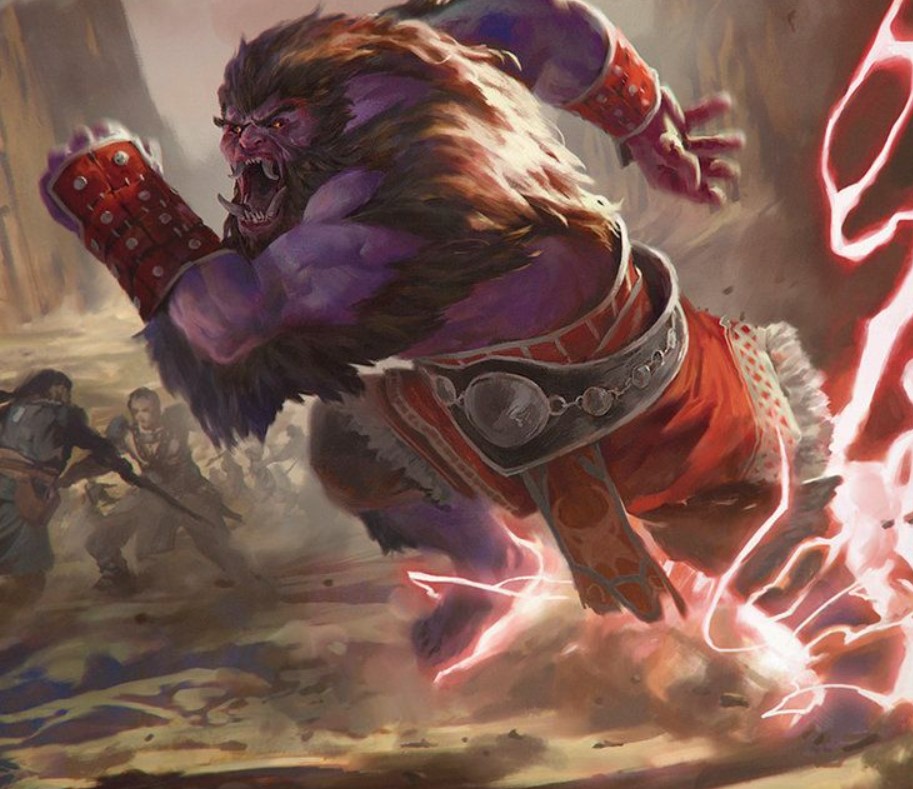
(Image Credit: Lake Hurwitz)
3rd level spells are a further step up in power, entering the realm of the incredible and iconic.
The Best Level 3 Sorcerer Spell- Haste
Source: Player's Handbook
3rd-level transmutation
Casting Time: 1 action
Range: 30 feet
Components: V, S, M (a shaving of licorice root)
Duration: Concentration, up to 1 minute
Choose a willing creature that you can see within range. Until the spell ends, the target’s speed is doubled, it gains a +2 bonus to AC, it has advantage on Dexterity saving throws, and it gains an additional action on each of its turns. That action can be used only to take the Attack (one weapon attack only), Dash, Disengage, Hide, or Use an Object action.
When the spell ends, the target can’t move or take actions until after its next turn, as a wave of lethargy sweeps over it.
Spell Lists. Artificer, Sorcerer, Wizard
An incredibly powerful and Iconic spell, Haste starts off by letting us turn off one of the biggest limiters in D&D, the action economy. Allowing an additional attack per turn is a scaleable threat when slapped on your biggest bruiser and allows for a ton of tricks.
A underutilized part of haste is that it doubles someone’s speed. That turns someone going at 30 feet each round into 60, a dash action adds an additional 60, and using your additional hasted action to dash again to go another 60, to move 180 feet in 6 seconds or a whopping 20 MPH. Sadly, you’re unable to dual concentrate to allow retreat to work with, but I did once have a player cast it on a sorcerer who had retreat on and then rode in a wagon behind the sorcerer who pulled.
Even more important the stackable AC boost, a rarity for already bulky warrior friends, one can only max out so many stats, and dexterity advantages are great for anyone and everyone. It also suspiciously advantages our heavily plated friends who are normally taking penalties to such checks and have no reason to increase it. All these factors combined make haste a fabulous support spell.
The Second Best Level 3 Sorcerer Spell- CounterSpell
Source: Player's Handbook
3rd-level abjuration
Casting Time: 1 reaction, which you take when you see a creature within 60 feet of you casting a spell
Range: 60 feet
Components: S
Duration: Instantaneous
You attempt to interrupt a creature in the process of casting a spell. If the creature is casting a spell of 3rd level or lower, its spell fails and has no effect. If it is casting a spell of 4th level or higher, make an ability check using your spellcasting ability. The DC equals 10 + the spell’s level. On a success, the creature’s spell fails and has no effect.
At Higher Levels. When you cast this spell using a spell slot of 4th level or higher, the interrupted spell has no effect if its level is less than or equal to the level of the spell slot you used.
Spell Lists. Sorcerer, Warlock, Wizard
Counterspell is the ultimate defensive spell, and is mentioned in more classic D&D stories than I can count. It’s caster’s power against Caster’s power, a great mage can counter spell a great mage into iconic stalemates.
Due to the phrasing in innate spellcasting, some monster abilities like the ice mephit’s fog cloud innate spellcasting are vulnerable to being countered by using counterspell.
This is more a hint to DMs then to players (Sorry guys, your getting enough help this article!) but as pointed out by Jeremy Crawford, “Lead rule designer” for D&D, you have to pick and choose which spell you wish to sacrifice, and you do NOT have the time to both counterspell and identify a spell in the same turn. Though importantly, you can alert a friend to what spell is coming next in the round.https://twitter.com/JeremyECrawford/status/928766415263252480 I find the concept that this forces your players to monologue to each other about the spells of your villains hilarious.
The Third Best Level 3 Sorcerer Spell- Fireball
Source: Player's Handbook
3rd-level evocation
Casting Time: 1 action
Range: 150 feet
Components: V, S, M (a tiny ball of bat guano and sulfur)
Duration: Instantaneous
A bright streak flashes from your pointing finger to a point you choose within range then blossoms with a low roar into an explosion of flame. Each creature in a 20-foot radius must make a Dexterity saving throw. A target takes 8d6 fire damage on a failed save, or half as much damage on a successful one. The fire spreads around corners. It ignites flammable objects in the area that aren’t being worn or carried.
At Higher Levels. When you cast this spell using a spell slot of 4th level or higher, the damage increases by 1d6 for each slot level above 3rd.
Spell Lists. Sorcerer, Wizard
Fireball is incredible. It is overpowered by design, because it’s existence is not just an awesome spell, but secretly a class feature of the sorcerer and wizard. Wizards of the coast purposefully leaves fireball more powerful than a spell of it’s level should be by design standards. They did this because it makes better stories. It is purposefully the best offensive spell possible.
With that in mind, beware that unless you take elemental adept or another ability to shift the element of your fireball away from fire, you will find yourself in many occasions where it does half damage or even no damage to all the things you want to, and all the important documents you do want are lit aflame.
Unless you have sculpt spell, fireball is not a “May” of a 20 foot radius, which means 40 feet across. And anything within that damage is going to include a lot of things you don’t want to unless your very careful. Always remember, if you wanna check the power of fireball, make it stick to the rules of the spell.
5. Fourth Level Spells
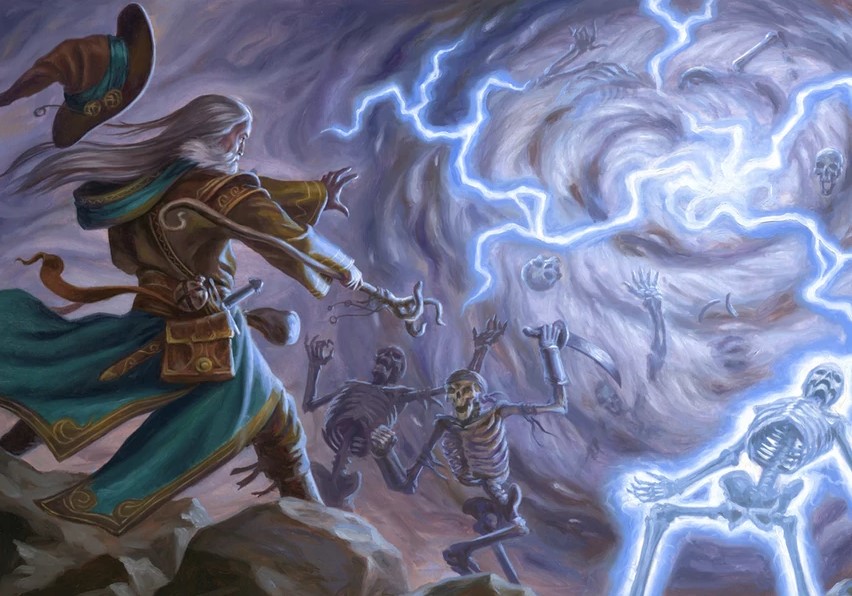
(Image Credit: Scott Murphy)
Fourth level spells are power houses.
The Best Level 4 Sorcerer Spell- Storm Sphere
Source: Xanathar's Guide to Everything
4th-level evocation
Casting Time: 1 action
Range: 150 feet
Components: V, S
Duration: Concentration, up to 1 minute
A 20-foot-radius sphere of whirling air springs into existence centered on a point you choose within range. The sphere remains for the spell’s duration. Each creature in the sphere when it appears or that ends its turn there must succeed on a Strength saving throw or take 2d6 bludgeoning damage. The sphere’s space is difficult terrain.
Until the spell ends, you can use a bonus action on each of your turns to cause a bolt of lightning to leap from the center of the sphere toward one creature you choose within 60 feet of the center. Make a ranged spell attack. You have advantage on the attack roll if the target is in the sphere. On a hit, the target takes 4d6 lightning damage.
Creatures within 30 feet of the sphere have disadvantage on Wisdom (Perception) checks made to listen.
At Higher Levels. When you cast this spell using a spell slot of 5th level or higher, the damage increases for each of its effects by 1d6 for each slot level above 4th.
Spell Lists. Sorcerer, Wizard
Thankfully, Storm Sphere is a spell powerful enough to justify not just heightening fireball. Dropping a continuous 2d6 damage in an area over 10 rounds for a total of 20d6 damage over one spell slot.
The fact that you can then use your bonus action attempt a lightning bolt blast for 4d6 every turn means that in one spell slot you can (If your accurate enough) deal 60d6 to one creature in the storm. Granted, without careful circumstances, most enemies will flee, but hey, you’re a sorcerer, that’s what the party is for.
One of those easy to forget about effects of storm sphere is that it creates difficult terrain. This does a lot to slow down creatures from escaping or simply dashing through the storm, maybe making them stay in the storm longer. And of course, the disadvantage on perception checks to listen is worth some hilarious roleplay opportunities.
The Second Best Level 4 Sorcerer Spell- Polymorph
4th-level Transmutation Spell
Casting Time: 1 action
Range: 60 feet
Target: A creature that you can see within range
Components: V S M (A caterpillar cocoon)
Duration: Up to 1 hour
This spell transforms a creature that you can see within range into a new form. An unwilling creature must make a Wisdom saving throw to avoid the effect. The spell has no effect on a shapechanger or a creature with 0 hit points.
The transformation lasts for the duration, or until the target drops to 0 hit points or dies. The new form can be any beast whose challenge rating is equal to or less than the target’s (or the target’s level, if it doesn’t have a challenge rating). The target’s game statistics, including mental ability scores, are replaced by the statistics of the chosen beast. It retains its alignment and personality.
The target assumes the hit points of its new form. When it reverts to its normal form, the creature returns to the number of hit points it had before it transformed. If it reverts as a result of dropping to 0 hit points, any excess damage carries over to its normal form. As long as the excess damage doesn’t reduce the creature’s normal form to 0 hit points, it isn’t knocked unconscious.
The creature is limited in the actions it can perform by the nature of its new form, and it can’t speak, cast spells, or take any other action that requires hands or speech.
The target’s gear melds into the new form. The creature can’t activate, use, wield, or otherwise benefit from any of its equipment.
Classes: Bard, Druid, Sorcerer, Wizard
Beasts is a wide array of options. “Beasts” means anything from a giant boar to a tiny crab to tyrannosaurus rex can be transformed into, granting yourself those abilities and essentially a whole new suite of attack options depending what kind of vicious animal planet documentary you wish to re-enact
As a offensive spell, polymorph is terrifying. One wisdom save, which can be altered or weakened in many different ways, and your opponent is now a rabbit, as it simply says “Or less” for what you transform the target into. Granted, it only works on one person at a time until the hour is up, but reducing a dragon into a rabbit for a few rounds while you shove it in a cage and work up a follow up play for an entire hour is well worth the 4th level spell slot.
The biggest trick is to remember that your mental stats are replaced by your new form, even if you keep your personality. That means that your animal jaunts may end abruptly if your crab form is to stupid to remember a complicated mission and wanders off after some shrimp! Remember, polymorph’s restrictions are meant to be fun, so enjoy the silliness that pops up from it.
The Third Best Level 4 Sorcerer Spell- Fire Shield
Source: Player's Handbook
4th-level evocation
Casting Time: 1 action
Range: Self
Components: V, S, M (a bit of phosphorus or a firefly)
Duration: 10 minutes
Thin and wispy flames wreathe your body for the duration, shedding bright light in a 10-foot radius and dim light for an additional 10 feet. You can end the spell early by using an action to dismiss it.
The flames provide you with a warm shield or a chill shield, as you choose. The warm shield grants you resistance to cold damage, and the chill shield grants you resistance to fire damage.
In addition, whenever a creature within 5 feet of you hits you with a melee attack, the shield erupts with flame. The attacker takes 2d8 fire damage from a warm shield, or 2d8 cold damage from a cold shield.
Spell Lists. Druid, Sorcerer, Wizard
Did you think I’d say invisibility? Of course not. Invisibility can be beat by so many spells and high level boss monsters, at the absolute worst time your best chance to flee fails? Terrible idea. Fire shield instead let’s you resist either fire or cold, two fairly common elemental attacks.
A overlooked ability of fire shield is that it gives you that you can’t drop, and doesn’t require any concentration to maintain. This means no losing your light due to a failed concentration check. It also resists most normal ways to extinguish light, as it is still super natural light and so can only be extinguished by supernatural darkness, as the light is separate from the shield effect.
Finally, Fire shield’s blast says that it does 2d8 damage every time a creature hits you with a melee attack. Opponents who specialize in using multiple attacks to inflict damage or effects will be especially reluctant to wield these abilities against you. The refrain of “Claw, Claw, Bite” sounds like a triple kaboom to the tune of 6d8 damage will make just about any vicious creature redirect it’s focus to a more tender looking team member
6. Level 5 Spells

(Image Credit: Max Porter)
The Best Level 5 Sorcerer Spell- Animate Objects
Source: Player's Handbook
5th-level transmutation
Casting Time: 1 action
Range: 120 feet
Components: V, S
Duration: Concentration, up to 1 minute
Objects come to life at your command. Choose up to ten nonmagical objects within range that are not being worn or carried. Medium targets count as two objects, Large targets count as four objects, Huge targets count as eight objects. You can’t animate any object larger than Huge. Each target animates and becomes a creature under your control until the spell ends or until reduced to 0 hit points.
As a bonus action, you can mentally command any creature you made with this spell if the creature is within 500 feet of you (if you control multiple creatures, you can command any or all of them at the same time, issuing the same command to each one). You decide what action the creature will take and where it will move during its next turn, or you can issue a general command, such as to guard a particular chamber or corridor. If you issue no commands, the creature only defends itself against hostile creatures. Once given an order, the creature continues to follow it until its task is complete.
Animated Object Statistics
Size
HP
AC
Attack
Ability Scores
Tiny
20
18
+8 to hit, 1d4 + 4 damage
Str: 4, Dex: 18
Small
25
16
+6 to hit, 1d8 + 2 damage
Str: 6, Dex: 14
Medium
40
13
+5 to hit, 2d6 + 1 damage
Str: 10, Dex: 12
Large
50
10
+6 to hit, 2d10 + 2 damage
Str: 14, Dex: 10
Huge
80
10
+8 to hit, 2d12 + 4 damage
Str: 18, Dex: 6
An animated object is a construct with AC, hit points, attacks, Strength, and Dexterity determine by its size. Its Constitution is 10 and its Intelligence and Wisdom are 3, and its Charisma is 1. Its speed is 30 feet; if the objects lack legs or other appendages it can use for locomotion, it instead has a flying speed of 30 feet and can hover. If the object is securely attached to a surface or larger object, such as a chain bolted to a wall, its speed is 0. It has blindsight with a radius of 30 feet and is blind beyond that distance. When the animated object drops to 0 hit points, it reverts to its original object form, and any remaining damage carries over to its original object form.
If you command an object to attack, it can make a single melee attack against a creature within 5 feet of it. It makes a slam attack with an attack bonus and bludgeoning damage determine by its size. The DM might rule that a specific object inflicts slashing or piercing damage based on its form.
At Higher Levels. If you cast this spell using a spell slot of 6th level or higher, you can animate two additional objects for each slot level above 5th.
Spell Lists. Artificer, Bard, Sorcerer, Wizard
Animated Objects is just… a little bit silly of a spell, that just gets sillier the longer you think about it. A bandolier of daggers or swords if the fighter is nice enough to carry them, and you can give 10 attacks at a single target or up to 10 targets spread around to 1d8+2 each.
Considering again that this continues on for up to 1 minute, that’s 10 rounds of 10 attacks at 1d8+2 each for a grand total of 100d8+400 damage. The versatility to switch it up to single larger tankier versions is pretty cool, but my belief is that the spell is stronger when it uses tiny or small weapons to hunt for critical hits.
One interesting way I’ve see animated objects use is to use it to lift objects that are much to big to be push aside in front of doorways and other avenues, like carts or statues. Considering the ability to give simple defensive orders of “Protect me” this spell also has decent defensive capabilities.
The Second Best Level 5 Sorcerer Spell- Wall of Light
Source: Xanathar's Guide to Everything
5th-level evocation
Casting Time: 1 action
Range: 120 feet
Components: V, S, M (a hand mirror)
Duration: Concentration, up to 10 minutes
A shimmering wall of bright light appears at a point you choose within range. The wall appears in any orientation you choose: horizontally, vertically, or diagonally. It can be free floating, or it can rest on a solid surface. The wall can be up to 60 feet long, 10 feet high, and 5 feet thick. The wall blocks line of sight, but creatures and objects can pass through it. It emits bright light out to 120 feet and dim light for an additional 120 feet.
When the wall appears, each creature in its area must make a Constitution saving throw. On a failed save, a creature takes 4d8 radiant damage, and it is blinded for 1 minute. On a successful save, it takes half as much damage and isn’t blinded. A blinded creature can make a Constitution saving throw at the end of each of its turns, ending the effect on itself on a success.
A creature that ends its turn in the wall’s area takes 4d8 radiant damage.
Until the spell ends, you can use an action to launch a beam of radiance from the wall at one creature you can see within 60 feet of it. Make a ranged spell attack. On a hit, the target takes 4d8 radiant damage. Whether you hit or miss, reduce the length of the wall by 10 feet. If the wall’s length drops to 0 feet, the spell ends.
At Higher Levels. When you cast this spell using a spell slot of 6th level or higher, the damage increases by 1d8 for each slot level above 5th.
Spell Lists. Sorcerer, Warlock, Wizard
Wall of Light is a ridiculous spell and shows off the power of a level 5 spell. The wall of light can be angled in any rotation, meaning that in a room it’s completely possible to generate the wall in such a way that your enemies cannot escape being in the wall. This turns a possible 4d8 radiant (A power type) and blinding into every round.
As previously mentioned, blinding an opponent cause them many disadvantages including in attacks and attacks against the target. Forcing repeated saves against blindness is just a great way to give bad guys a bad time.
If all else fails, the ability to start chopping the wall up to fire beams at your opponents is a great fallback plan to make sure that even if your opponent does something unexpected, your wall doesn’t go to waste.
The Third Best Level 5 Sorcerer Spell- Teleportation Circle
Source: Player's Handbook
5th-level conjuration
Casting Time: 1 minute
Range: 10 feet
Components: V, M (rare chalks and inks infused with precious gems worth 50 gp, which the spell consumes)
Duration: 1 round
As you cast the spell, you draw a 10-foot-diameter circle on the ground inscribed with sigils that link your location to a permanent teleportation circle of your choice whose sigil sequence you know and that is on the same plane of existence as you.
A shimmering portal opens within the circle you drew and remains open until the end of your next turn. Any creature that enters the portal instantly appears within 5 feet of the destination circle or in the nearest unoccupied space if that space is occupied.
Many major temples, guilds, and other important places have permanent teleportation circles inscribed somewhere within their confines. Each such circle includes a unique sigil sequence – a string of magical runes arranged in a particular pattern. When you first gain the ability to cast this spell, you learn the sigil sequences for two destinations on the Material Plane, determined by the DM. You can learn additional sigil sequences during your adventures. You can commit a new sigil sequence to memory after studying it for 1 minute.
You can create a permanent teleportation circle by casting this spell in the same location every day for one year. You need not use the circle to teleport when you cast the spell in this way.
Spell Lists. Bard, Sorcerer, Warlock, Wizard
Teleportation Circle is a game changer. Once you receive it, you have a new ability, which is to go home when needed. While the casting a spell in the same place for a year bit does make it a bit tricky, the ability to teleport back to a safe place if you can buy 10 turns worth of time is more than worth it.
The story possibilities that open to GMs by allowing you to make swift transportation between major points of intrigue is always good. If you can’t bribe the GM with pizza, bribe them with story hooks.
Notably for players who are perhaps known for being particularly clever, is that the teleportation circle gives no save to resist being teleported. If you are in the circle, you go. I have had an occasional player put a teleportation circle somewhere silly, like in a cage underground to send back people that had been captured
7. 6th level spells

(Image Credit: Diego de Almeida)
The Best Level 6 Sorcerer Spell- Disintegrate
Source: Player's Handbook
6th-level transmutation
Casting Time: 1 action
Range: 60 feet
Components: V, S, M (a lodestone and a pinch of dust)
Duration: Instantaneous
A thin green ray springs from your pointing finger to a target that you can see within range. The target can be a creature, an object, or a creation of magical force, such as the wall created by wall of force.
A creature targeted by this spell must make a Dexterity saving throw. On a failed save, the target takes 10d6 + 40 force damage. The target is disintegrated if this damage leaves it with 0 hit points.
A disintegrated creature and everything it is wearing and carrying, except magic items, are reduced to a pile of fine gray dust. The creature can be restored to life only by means of a true resurrection or a wish spell.
This spell automatically disintegrates a Large or smaller nonmagical object or a creation of magical force. If the target is a Huge or larger object or creation of force, this spell disintegrates a 10-foot-cube portion of it. A magic item is unaffected by this spell.
At Higher Levels. When you cast this spell using a spell slot of 7th level or higher, the damage increases by 3d6 for each slot level above 6th.
Spell Lists. Sorcerer, Wizard
There is hardly a better spell in terms of raw damage than disintegrate. 10d6 +40 is a lot of damage to be done in a single turn over a single action, and force damage is resisted by almost nothing in the D&D universe.
Disintegrate also, as a function of it’s killing ability, over rides many healing abilities of monsters. If a creature heals each turn or recovers a certain amount, but they are brought to 0 by disintegrate, they instead turn to fine powder and can’t be restored to life. Who needs garlic to keep a vampire from coming back when you’ve got the green laser of doom.
Finally, Disintegrate can simply be used to remove 10 foot cubes of things that are in your way. Like vault doors, or walls, or objects of veneration of evil deities. A delete key at the end of a 60 foot line is a wonderful thing to have on hand.
The Second Best Level 6 Sorcerer Spell- True Seeing
Source: Player's Handbook
6th-level divination
Casting Time: 1 action
Range: Touch
Components: V, S, M (an ointment for the eyes that costs 25 gp; is made from mushroom powder, saffron, and fat; and is consumed by the spell)
Duration: 1 hour
This spell gives the willing creature you touch the ability to see things as they actually are. For the duration, the creature has truesight, notices secret doors hidden by magic, and can see into the Ethereal Plane, all out to a range of 120 feet.
Spell Lists. Bard, Cleric, Sorcerer, Warlock, Wizard
You just need true seeing at these levels. Anything worth your time is gonna at least try to obscure your vision or confuse you somehow. If you’re following this guide, you probably have a few ways to do it to.
Offensively, true sight can also be used if you’re dealing with a target you know doesn’t have true sight. You simply can look through fog darkness and even into the ethereal plane, while your victim isn’t able to do the same.
True sight becomes invaluable for roleplaying, as sometimes it can be the only way to confirm that an individual is who they say they are. Call it paranoia, but I like being able to confirm that the bar is not a mimic.
The Third Best Level 6 Sorcerer Spell- Globe of Invulnerability
Source: Player's Handbook
6th-level abjuration
Casting Time: 1 action
Range: Self (10-foot radius)
Components: V, S, M (a glass or crystal bead that shatters when the spell ends)
Duration: Concentration, up to 1 minute
An immobile, faintly shimmering barrier springs into existence in a 10-foot radius around you and remains for the duration.
Any spell of 5th level or lower cast from outside the barrier can’t affect creatures or objects within it, even if the spell is cast using a higher level spell slot. Such a spell can target creatures and objects within the barrier, but the spell has no effect on them. Similarly, the area within the barrier is excluded from the areas affected by such spells.
At Higher Levels. When you cast this spell using a spell slot of 7th level or higher, the barrier blocks spells of one level higher for each slot level above 6th.
Spell Lists. Sorcerer, Wizard
Globe of invulnerability is Counterspell’s big brother. In return for concentration, you can just tell your opponents “No” to all spells targeting you and allies within your zone. The applications are plentiful and strong.
Importantly what the Globe of Invulnerability does the best is that it frees you up from having to use counterspell repeatedly. Instead you can drain multiple levels worth of your opponents spells in return for only one casting of your own.
Eventually this spell can scale up to make you and your entire party impervious to almost all enemy magic. This powerful effect is not to be underestimated, as the most powerful effects in the game are based in magic.
8. Level 7 Spells
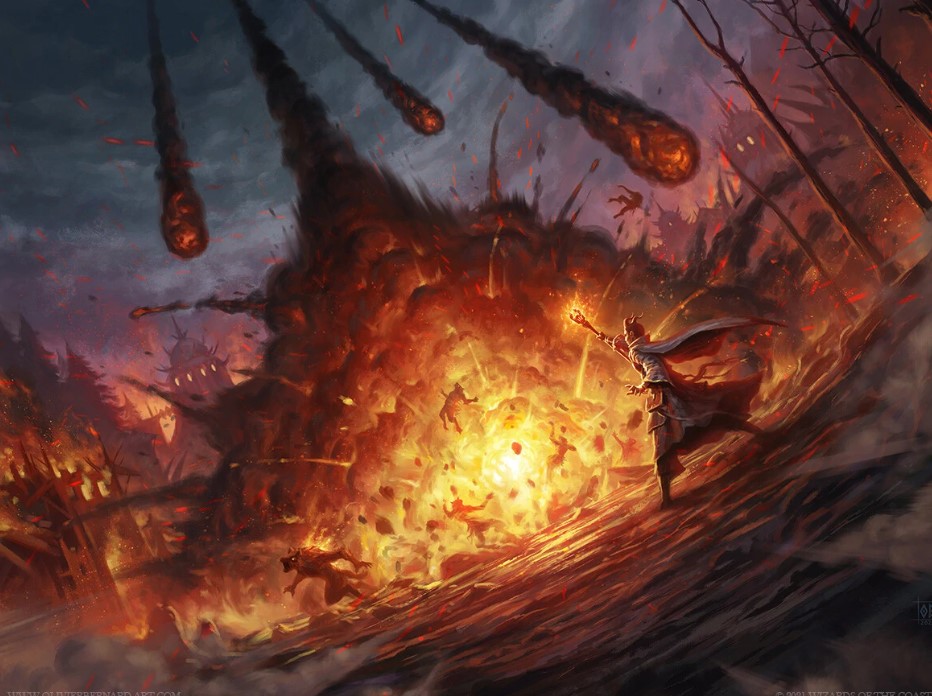
(Image Credit: Zack Stella )
The Best Level 7 Sorcerer Spell- Firestorm
Source: Player's Handbook
7th-level evocation
Casting Time: 1 action
Range: 150 feet
Components: V, S
Duration: Instantaneous
A storm made up of sheets of roaring flame appears in a location you choose within range. The area of the storm consists of up to ten 10-foot cubes, which you can arrange as you wish. Each cube must have at least one face adjacent to the face of another cube. Each creature in the area must make Dexterity saving throw. It takes 7d10 fire damage on a failed save, or half as much damage on a successful one.
The fire damages objects in the area and ignites flammable objects that aren’t being worn or carried. If you choose, plant life in the area is unaffected by this spell.
Spell Lists. Cleric, Druid, Sorcerer
Firestorm is fireball’s big brother and is here to push someone with a bad dex score around. In one mode, you can alternate the cubes so that all of them focus on the same 10 foot square, dealing 70d10 fire damage to your target.
Though, if your targets are instead, say, the front line of more weak and easily removed minions, firestorm makes a incredible sweep of territory, dealing 100 feet worth of 7d10 damage across a line of targets will roast most soldiers or swarm critters.
Noticeably, firestorm let’s you cast it in a forest without lighting the forest on fire. At these big levels, sometimes those little side benefits can mean all the difference.
The Second Best Level 3 Sorcerer Spell- Crown of Stars
Source: Xanathar's Guide to Everything
7th-level evocation
Casting Time: 1 action
Range: Self
Components: V, S
Duration: 1 hour
Seven star-like motes of light appear and orbit your head until the spell ends. You can use a bonus action to send one of the motes streaking toward one creature or object within 120 feet of you. When you do so, make a ranged spell attack. On a hit, the target takes 4d12 radiant damage. Whether you hit or miss, the mote is expended. The spell ends early if you expend the last mote. If you have four or more motes remaining, they shed bright light in a 30-foot radius and dim light for an additional 30 feet. If you have one to three motes remaining, they shed dim light in a 30-foot radius.
At Higher Levels. When you cast this spell using a spell slot of 8th level or higher, the number of motes created increases by two for each slot level above 7th.
Spell Lists. Sorcerer, Warlock, Wizard
Crown of stars is a sneaky little spell in that it seems underwhelming for it’s level at first. A level 7 spell to do 4d12 doesn’t seem like much until you realize that the mote’s are expended with a bonus action, WITHOUT concentration.
This means crown of stars is a boss killer spell, meant to be set up before hand when you travel to a boss, then unload with your most powerful spells, including your crown of stars, which will fire out it’s motes for even more damage in your action economy.
Finally, even if it is only 4d12 at first, 28d12 over the course of 7 turns using radiant damage is quite a bit of damage dished out, and in a superior damage type.
The Third Best Level 7 Sorcerer Spell- Etherealness
Source: Player's Handbook
7th-level transmutation
Casting Time: 1 action
Range: Self
Components: V, S
Duration: Up to 8 hours
You step into the border regions of the Ethereal Plane, in the area where it overlaps with your current plane. You remain in the Border Ethereal for the duration or until you use your action to dismiss the spell. During this time, you can move in any direction. If you move up or down, every foot of movement costs an extra foot. You can see and hear the plane you originated from, but everything there looks gray, and you can’t see anything more than 60 feet away.
While on the Ethereal Plane, you can only affect and be affected by other creatures on that plane. Creatures that aren’t on the Ethereal Plane can’t perceive you and can’t interact with you, unless a special ability or magic has given them the ability to do so.
You ignore all objects and effects that aren’t on the Ethereal Plane, allowing you to move through objects you perceive on the plane you originated from. When the spell ends, you immediately return to the plane you originated from in the spot you currently occupy. If you occupy the same spot as a solid object or creature when this happens, you are immediately shunted to the nearest unoccupied space that you can occupy and take force damage equal to twice the number of feet you are moved.
This spell has no effect if you cast it while you are on the Ethereal Plane or a plane that doesn’t border it, such as one of the Outer Planes.
At Higher Levels. When you cast this spell using a spell slot of 8th level or higher, you can target up to three willing creatures (including you) for each slot level above 7th. The creatures must be within 10 feet of you when you cast the spell.
Spell Lists. Bard, Cleric, Sorcerer, Warlock, Wizard
Etherealness is your level 7 emergency button. If your opponent doesn’t counterspell it, and they don’t have it prepared themselves, you can’t be touched.
Even if in some circumstance the opponent has the ability to chase you across to the ethereal plane, forcing them to reveal the power and waste the time to step over into the other plane is valuable information that wastes valuable amounts of your opponents time.
Etherealness also opens up new adventures, as the ethernal plane has it’s own lore and denizens. Your GM will thank you for the ability to drag you on all new adventures!
9. Level 8 Spells
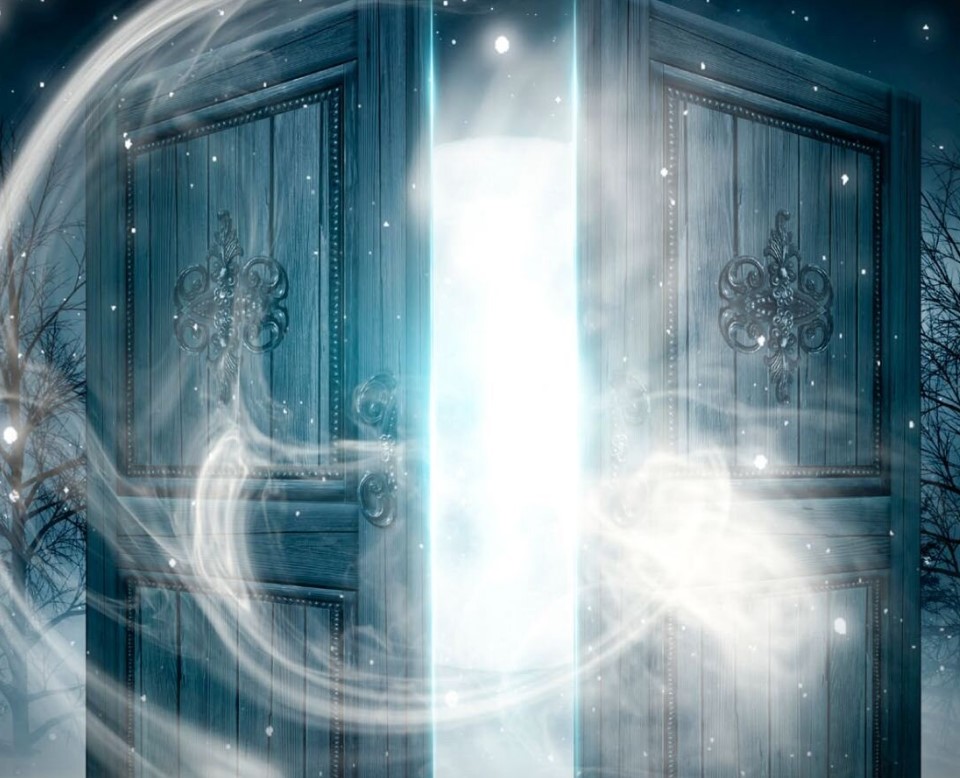
(Arist Credit: MiaStendal)
The Best Level 8 Sorcerer Spell- Demiplane
8th Level conjuration
Casting Time: 1 action
Range: 60 feet
Target: A flat solid surface that you can see within range
Components: S
Duration: 1 hour
Classes: Warlock, Wizard
You create a shadowy door on a flat solid surface that you can see within range. The door is large enough to allow Medium creatures to pass through unhindered. When opened, the door leads to a demiplane that appears to be an empty room 30 feet in each dimension, made of wood or stone. When the spell ends, the door disappears, and any creatures or objects inside the demiplane remain trapped there, as the door also disappears from the other side.
Each time you cast this spell, you can create a new demiplane, or have the shadowy door connect to a demiplane you created with a previous casting of this spell. Additionally, if you know the nature and contents of a demiplane created by a casting of this spell by another creature, you can have the shadowy door connect to its demiplane instead.
Demiplane literally let’s create an infinite number of doors that yo0u can access with a wave of your hand, only restrained by your spells per day. Since you can literally open demiplanes for unlimited storage only restrained by your ability to keep track of what you’ve stashed away.
Demiplane creates a door that you can run through in an emergency, allowing you to duck out of dangerous situations literally into another plane.
In the same note, it is the ultimate form of restraint. Once you put a enemy in the demiplane, and you finish the spell, it is trapped there until you expend the energy to get it out again, unless it’s a spellcaster of equal power AND knowledge of this spell.
The Second Best Level 8 Sorcerer Spell- Incendiary Cloud
Source: Player's Handbook
8th-level conjuration
Casting Time: 1 action
Range: 150 feet
Components: V, S
Duration: Concentration, up to 1 minute
A swirling cloud of smoke shot through with white-hot embers appears in a 20-foot-radius sphere centered on a point within range. The cloud spreads around corners and is heavily obscured. It lasts for the duration or until a wind of moderate or greater speed (at least 10 miles per hour) disperses it.
When the cloud appears, each creature in it must make a Dexterity saving throw. A creature takes 10d8 fire damage on a failed save, or half as much damage on a successful one. A creature must also make this saving throw when it enters the spell’s area for the first time on a turn or ends its turn there.
The cloud moves 10 feet directly away from you in a direction that you choose at the start of each of your turns.
Spell Lists. Druid, Sorcerer, Wizard
Incendiary cloud basically says “If you can keep your opponent in this cloud you win.” A instant 10d8 fire damage drop on a failed saved over a 20 foot radius is a huge spread.
By concentrating, you can continue this damage for 10 turns, doing a massive 100d8 damage over the course of that minute.
At this level, you really should be able to sculpt spells. Which means that dropping this cloud in a room with holes carved out for your team members can absolutely wreck your enemies.
The Third Best Level 8 Sorcerer Spell- Dominate Monster
Source: Player's Handbook
8th-level enchantment
Casting Time: 1 action
Range: 60 feet
Components: V, S
Duration: Concentration, up to 1 hour
You attempt to beguile a creature that you can see within range. It must succeed on a Wisdom saving throw or be charmed by you for the duration. If you or creatures that are friendly to you are fighting it, it has advantage on the saving throw.
While the creature is charmed, you have a telepathic link with it as long as the two of you are on the same plane of existence. You can use this telepathic link to issue commands to the creature while you are conscious (no action required), which it does its best to obey. You can specify a simple and general course of action, such as "Attack that creature," "Run over there," or "Fetch that object." If the creature completes the order and doesn’t receive further direction from you, it defends and preserves itself to the best of its ability.
You can use your action to take total and precise control of the target. Until the end of your next turn, the creature takes only the actions you choose, and doesn’t do anything that you don’t allow it to do. During this time, you can also cause the creature to use a reaction, but this requires you to use your own reaction as well.
Each time the target takes damage, it makes a new Wisdom saving throw against the spell. If the saving throw succeeds, the spell ends.
At Higher Levels. When you cast this spell with a 9th-level spell slot, the duration is concentration, up to 8 hours.
Spell Lists. Bard, Sorcerer, Warlock, Wizard
There aren’t many choices of spells at 8th level, maybe because it’s hard to justify choosing a better spell than Dominate monster. One wisdom saving throw, even with advantage, can completely ruin a fight and end it immediately.
Even if you are unable to use it on the most powerful boss monster, stealing important allies mid battle to force a distraction and waste resources is invaluable.
As dominate monster applies to any creature, with no verbal ability to communicate required, you can take control of some INCREDIBLY powerful monsters, even dragons. The fact that this spell exists is scary, even with concentration as a limiter.
10. Level 9 Spells
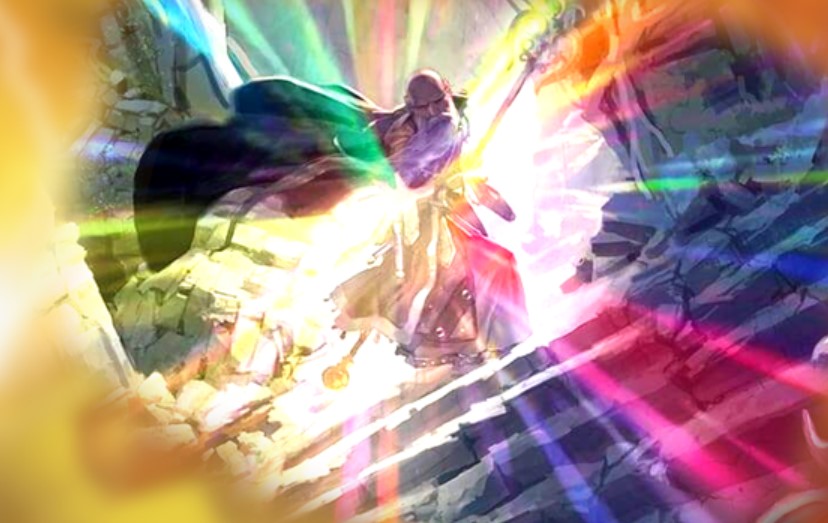
(Image Credit: Bill Willingham)
The Best Level 9 Sorcerer Spell- Wish
Source: Player's Handbook
9th-level conjuration
Casting Time: 1 action
Range: Self
Components: V
Duration: Instantaneous
Wish is the mightiest spell a mortal creature can cast. By simply speaking aloud, you can alter the very foundations of reality in accord with your desires.
The basic use of this spell is to duplicate any other spell of 8th level or lower. You don’t need to meet any requirements in that spell, including costly components. The spell simply takes effect.
Alternatively, you can create one of the following effects of your choice:
You create one object of up to 25,000 gp in value that isn’t a magic item. The object can be no more than 300 feet in any dimension, and it appears in an unoccupied space you can see on the ground.
You allow up to twenty creatures that you can see to regain all hit points, and you end all effects on them described in the greater restoration spell.
You grant up to ten creatures that you can see resistance to a damage type you choose.
You grant up to ten creatures you can see immunity to a single spell or other magical effect for 8 hours. For instance, you could make yourself and all your companions immune to a lich’s life drain attack.
You undo a single recent event by forcing a reroll of any roll made within the last round (including your last turn). Reality reshapes itself to accommodate the new result. For example, a wish spell could undo an opponent’s successful save, a foe’s critical hit, or a friend’s failed save. You can force the reroll to be made with advantage or disadvantage, and you can choose whether to use the reroll or the original roll.
You might be able to achieve something beyond the scope of the above examples. State your wish to the DM as precisely as possible. The DM has great latitude in ruling what occurs in such an instance; the greater the wish, the greater the likelihood that something goes wrong. This spell might simply fail, the effect you desire might only be partly achieved, or you might suffer some unforeseen consequence as a result of how you worded the wish. For example, wishing that a villain were dead might propel you forward in time to a period when that villain is no longer alive, effectively removing you from the game. Similarly, wishing for a legendary magic item or artifact might instantly transport you to the presence of the item’s current owner.
The stress of casting this spell to produce any effect other than duplicating another spell weakens you. After enduring that stress, each time you cast a spell until you finish a long rest, you take 1d10 necrotic damage per level of that spell. This damage can’t be reduced or prevented in any way. In addition, your Strength drops to 3, if it isn’t 3 or lower already, for 2d4 days. For each of those days that you spend resting and doing nothing more than light activity, your remaining recovery time decreases by 2 days. Finally, there is a 33 percent chance that you are unable to cast wish ever again if you suffer this stress.
Spell Lists. Sorcerer, Wizard
The iconic ninth level spell, Wish has a reputation of going wrong, but if you read the wish description closely, you’ll notice that things only go wrong if you get greedy and ask for more than what the spell asks for.
Wish itself costs nothing, and while not mimicking lower spells does render the possibility that you might not be able to cast it again, you do have the ability to completely fix a fight that is ongoing at the cost of some strength and HP, well worth the risk for it’s special effects.
Finally, if you really are brave, you can consider just talking to your GM about what cool thing you want to do. Often, GMs will be more than happy to work with you to give you a cool wish ability if you work it out with them beforehand. Just remember to not get to greedy.
The Second Best Level 9 Sorcerer Spell- Timestop
Source: Player's Handbook
9th-level transmutation
Casting Time: 1 action
Range: Self
Components: V
Duration: Instantaneous
You briefly stop the flow of time for everyone but yourself. No time passes for other creatures, while you take 1d4 + 1 turns in a row, during which you can use actions and move as normal.
This spell ends if one of the actions you use during this period, or any effects that you create during this period, affects a creature other than you or an object being worn or carried by someone other than you. In addition, the spell ends if you move to a place more than 1,000 feet from the location where you cast it.
Spell Lists. Sorcerer, Wizard
Another classic of the great powers. Time stop has offensive, defensive, and support capabilities. Offensively, you can prepare spells with time delays, such as delay fireball (I’m pretty sure it only exists for this spell) to cause all 1d4+1 spells to activate at once.
Defensively, time stop allows you to fit 1d4+1 rounds of defensive spells casting during an ambush or other extreme circumstance where literally every second matters.
In a support manner, so long as you do not affect another creature, you can cast any spells you may need. That may include things like creating or shaping terrain, summoning illusionary armies, or other inventive ideas.
The Third Best Level 9 Sorcerer Spell- Power Word Kill
9 enchantment
Casting Time: 1 action
Range: 60 feet
Target: One creature you can see within range
Components: V
Duration: Instantaneous
You utter a word of power that can compel one creature you can see within range to die instantly. If the creature you choose has 100 hit points or fewer, it dies. Otherwise, the spell has no effect.
Classes: Bard, Sorcerer, Warlock, Wizard
Power word kill is impressive in it’s simplicity. You speak, a creature dies if it’s weak enough. Even late game creatures often don’t have much more than 100 HP if their primary spell casters, making it particularly effective.
A creature only has to have less than 100 hit points, it does not have to start at 100 hp. This means that you can kill a boss level creature instantly once you get them low enough you don’t have to go past.
You may also be interested in:
- Log in or register to post comments
 Home
Home PC Game Trailers
PC Game Trailers News
News Menu
Menu



![[Top 10] D&D Best Barbarian Feats Revealed](https://www.gamersdecide.com/sites/default/files/styles/308x185-scale-crop--more-top-stories/public/screen_shot_2022-02-17_at_12.17.13_am.jpg)
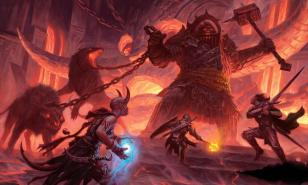

![[Top 20] D&D Best Warlock Items, Armor, and Weapons D&D Best Warlock Items, Armor, and Weapons](https://www.gamersdecide.com/sites/default/files/styles/308x185-scale-crop--more-top-stories/public/5._top-20-best-warlock-items-headline_1.jpg)
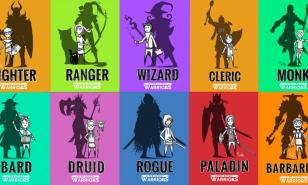




![[Top 11] D&D Best Rogue Multiclass That Are Fun To Play Best D&D Rogue Multiclass That Are Fun To Play](https://www.gamersdecide.com/sites/default/files/styles/308x185-scale-crop--more-top-stories/public/screenhunter_68_15.jpg)
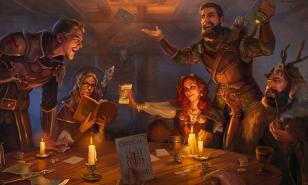
![[Top 10] D&D Best Monk Feats Revealed](https://www.gamersdecide.com/sites/default/files/styles/308x185-scale-crop--more-top-stories/public/screen_shot_2022-02-16_at_4.01.15_am.jpg)

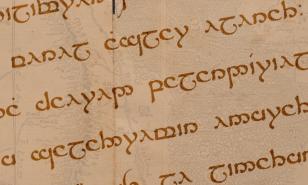


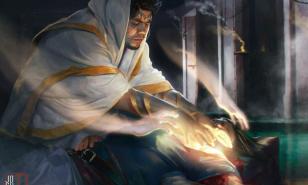



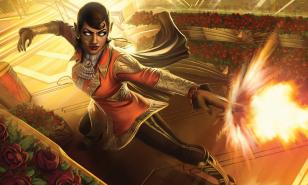
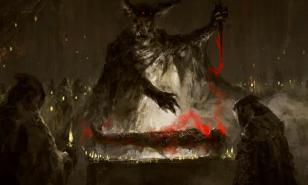
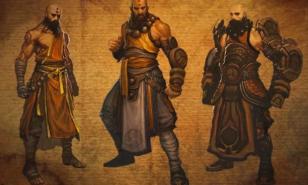



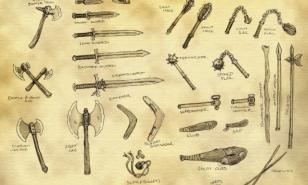


![[Top 11] D&D: Best Feats Top 11 Best Feats in D&D](https://www.gamersdecide.com/sites/default/files/styles/308x185-scale-crop--more-top-stories/public/dnd_feats_main_image.jpg)

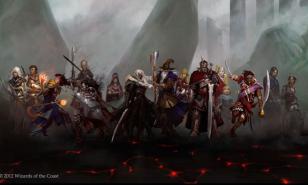

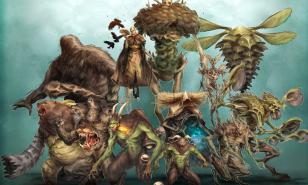

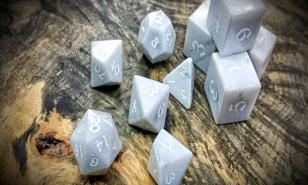
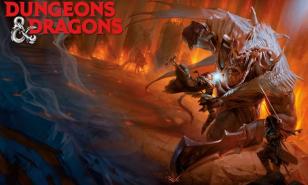


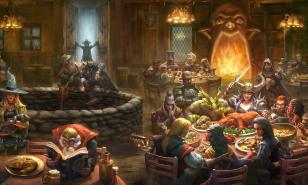
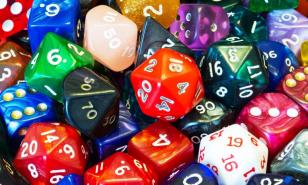
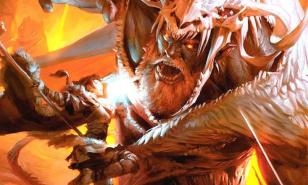
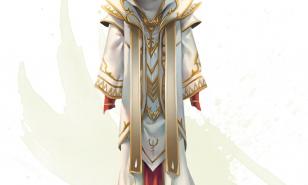
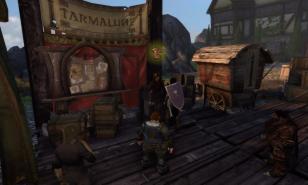
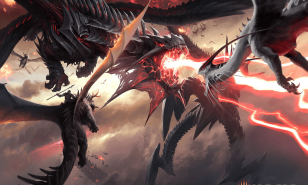

![[Top 10] D&D Best Party Compositions That Are Great a group of adventurers towering valiantly upon a cliff.](https://www.gamersdecide.com/sites/default/files/styles/308x185-scale-crop--more-top-stories/public/screenhunter_02_6.jpg)
